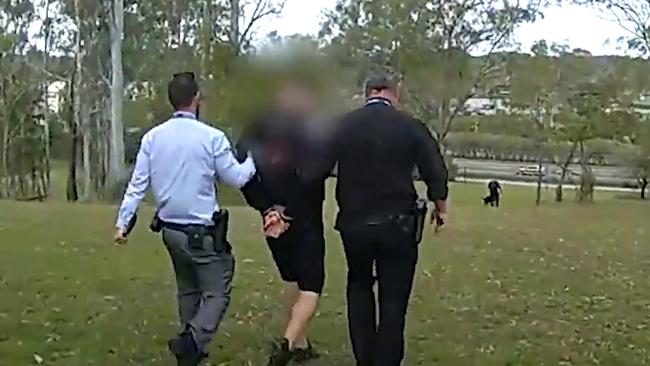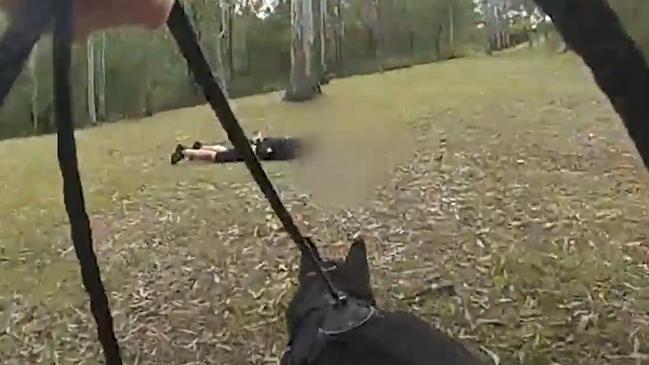Explained: Qld’s youth crime crisis laid bare
A youth crime crisis is gripping the state – so what can we do about it? ALL YOUR QUESTIONS ANSWERED

Youth crime continues to be the scourge of Queensland – but what is being done and what are the possible solutions?
We answer all your questions >>>
Is youth crime increasing in Qld?
Alarming data in November 2024 showed youth crime jumped more than 10 per cent in the previous financial year, as the Crisafulli government pushed its signature “adult crime, adult time” legislation through parliament.
The statistics revealed youth crime jumped 12 per cent in 2023/24 compared to the previous year.
The number of proven offences committed by young people rose from 41,155 in 2022/23 to 46,130 in 2023/24.
Children were also committing more crime on average at 14.1 offences per young person in 2023/24, up from 12.5 per youth in 2022/23.
The Australian Bureau of Statistics (ABS) Recorded Crime data in December 2023 showed the number of young criminals in Queensland has increased 6 per cent to 10,878 offenders in the previous year.
Rates of youth crime – accounting for population growth – also showed the offender rate increased from 1863 offenders per 100,000 people to 1925 in the same time.
The number of juvenile Serious Repeat Offenders in Queensland also increased from 465 in December 2022 to 482 now.
In April 2024 the state’s youth crime epidemic was laid bare in a new report revealing the number of young criminals in Queensland jumped 5.2 per cent to 11,191 offenders, with 11 of those charged with murder.
In May it was revealed juvenile gang members are contacting each other from inside Queensland’s youth detention centres to orchestrate attacks against fellow prisoners and staff.
Detainees are entitled to 120 minutes of phone call time per week to make calls to contacts on a pre-approved list, but have been caught cheating the system by using three-way conference calls, allowing them to connect with associates both inside and outside of detention centres.
In January 2025 it was revealed a staggering 227 juveniles had been arrested and charged with 484 offences since the government’s youth crime laws were introduced three weeks earlier.
Commissioner Steve Gollschewski said youth crime had not decreased since his appointment last April.
The Making Queensland Safer Laws were passed in parliament on December 12, 2024, removing detention as a last resort four young offenders and allowing their full criminal history to follow them into adulthood.
What age is 'youth crime' in Queensland?
More information: Qld Sentencing Advisory Council
What was the crime rate in Queensland in 2024?
The LNP was in January 2025 accused of “cherry picking” data and “sloganeering” after comments made over a drop in the number of certain crimes reported over the Christmas-New Year period.
It came after the Queensland government claimed a drop in the number of break-ins and car thefts over the period was testament to harsh new adult crime, adult time laws.
Queensland Police figures showed 8335 break-ins were reported across December and January of 2023-24 compared to 7832 in the same period in 2024-25 – a drop of 6 per cent.
Similarly, there was a 6 per cent decline in reported car thefts with 3755 across December and January of 2023-24 compared to 3511 in 2024-25.
The crime rate for all offences in 2023 was 928 per 100,000 people.
This was an increase from 870 in 2022, 806 in 2021, 813 in 2020, 885 in 2019 and 859 in 2018.
Sadly, Queensland has a growing list of victims allegedly at the hands of youths.

What are Qld's worst youth crime suburbs?
A Queensland Police crime map analysis in March 2024 showed suburbs with some of the biggest shopping hubs recorded the most assaults, including Brisbane City, Fortitude Valley, Southport and Surfers Paradise.
What crime is most common in youth?
In 2020 young people aged 10 to 17 were found guilty of 3142 illegal use of motor vehicle charges. This jumped to 5063 charges in 2021 before skyrocketing to 7087 in 2023.
According to Australia Bureau of Statistics (ABS) data, violent offences – or acts intended to cause injury – accounted for 23 per cent of juvenile crimes in the last financial year.
It was the most common offence, followed by theft.
According to Queensland Police data, the main offences committed by juveniles was property crime.
In 2023, juveniles were responsible for 10,382 unlawful entry offences, 7332 unlawful use of a motor vehicle offences, 4348 assault offences, 1437 robbery offences, and eight murder offences.
What can we do to stop youth crime?
Addressing youth crime in Queensland is incredibly complex, with the LNP government introducing 'adult crime, adult time' laws in November 2024. Here is what you said about the laws.
Youth crime requires action from the entire community, agencies, police and government.
Early intervention programs and education are key elements to stopping youth crime, as well as support for families and diversionary programs.
Queensland Police Commissioner Katarina Carroll has called for all serious repeat offenders to be fitted with ankle bracelets while the community wants juveniles who commit serious crimes to be tried as if they are adults.
The Queensland Police are also focused on programs for at-risk teens to steer them away from a life of crime, as well as better communication with victims of crime.
Many politicians, experts and families have weighed in with advice on how to help fix the scourge.
In July 2024 then Opposition Leader David Crisafulli pledged to get tough on young criminals and vowed to treat them as adults.

Why is youth crime so high in Qld?
Youth crime is a complex issue where juveniles are generally disengaged from society as a whole.
Young offenders often come from a background of family dysfunction, neglect or abuse, and don’t have any role models in their lives.
Juveniles often become displaced, many ending up in residential care homes, or are led astray by older peers and start abusing drugs and alcohol.
Young people then become engaged in low-level offending, which in time escalates to break-ins, car thefts and more violent crimes.
Queensland Police Service Acting Assistant Commissioner Andrew Massingham said he believed social media was the “number one” reason young criminals break into homes and steal cars.
Young people often share their crime to social media for notoriety, or to influence other young people to join them.
Where is most youth crime in Qld?
Queensland’s most prolific young offenders are concentrated in the state’s north, data in December 2024 revealed, with police grappling with a staggering volume of crime.
Police and youth justice data released by the state government showed there were 400 serious repeat youth offenders scattered across Queensland as of December.
A staggering 40 per cent, or 159, of those serious repeat offenders were based in the Far North, Townsville and Mount Isa police districts.
According to Queensland Police data in 2023, Mount Isa has the worst crime rate in Queensland.
In 2023, the data stated that more than 10 in every 1000 people had their car stolen in a town of just 18,000 people.
Car thefts have more than doubled in four years, and break-ins have gone up by almost 50 per cent.
When comparing larger cities, Townsville in North Queensland had the worst crime rate of any major centre in the state.
Since 2020, the rate of car thefts per 1,000 people in Townsville has increased from 4.7 to 7.9. Break-in rates have also increased from 17.1 to 21.23 over the three-year period.
Courier Mail subscription offer: What you get as a subscriber
What are the youth crime laws in Australia?
The Youth Justice Act 1992 took effect on 1 September 1993. The Act provides a framework for dealing with young people in contact with the youth justice system.
Young people aged between 10 and 17 years old are dealt with as juveniles. They can be charged with any offence adults can, but their punishments differ greatly to those aged over 18.
Under the YJA, certain offences can be dealt with by way of caution, warning, or youth justice conferences.
More serious offences are dealt with in Queensland Children’s Court.
If found guilty, the magistrate takes into account a child’s age, criminal history, family relationships, and other factors, to determine a sentence.
Sentence types can range from good behaviour to a term of detention in a youth detention centre.
A magistrate can sentence a child to detention for up to one year. Judges in higher courts, dealing with more serious crimes, can sentence juveniles to detention for five years, or half of the maximum adult sentence for the offence.
Maximum sentences for crimes like murder are 10 years.
There have been several changes and amendments made to the YJA by the state government in the last few years in an effort to strengthen laws and avoid serious repeat offenders from being granted bail.
Magistrates are bound by the laws set by the government, but they can use their judicial discretion when choosing a punishment (unless mandatory sentence applies).
There has also been a rise in personal safety devices.
What rights do youth criminals have?
Our goal is to provide a fair and balanced response to young people in contact with the youth justice system. This response:
- holds young people accountable for their actions
- encourages young people to reintegrate into the community
- gives young people skills to create a better future
- promotes community safety.
Originally published as Explained: Qld’s youth crime crisis laid bare
